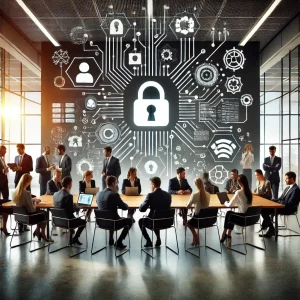
Digital transformation is driving innovation at a pace we’ve never seen before. With technologies like Artificial Intelligence (AI), the Internet of Things (IoT), and machine learning (ML) leading the charge, businesses are unlocking new levels of efficiency and creativity. But as organisations embrace this digital revolution, they inadvertently widen the door to cyber threats. Consider the case last year about the US$25 million AI-powered deepfake scam in Hong Kong, a stark reminder of the risks that accompany rapid technological change.
While many organisations pour resources into advanced cybersecurity tools, they often overlook one critical element: their people. Employees are not only a potential vulnerability but also the first line of defense. When equipped with the right mindset, training, and tools, they become your strongest cybersecurity asset.
Employees: The Linchpin of Cybersecurity
Studies consistently show that human error remains the leading cause of data breaches. Nearly a third of employees in Asia, for instance, have been found to click on phishing links or respond to fraudulent requests. With digital footprints growing larger every day, the potential for mistakes multiplies.
However, this isn’t a story of inevitability. When organisations prioritise their people as part of their cybersecurity strategy, the narrative shifts. Employees can detect threats, report anomalies, and respond swiftly, turning potential risks into proactive defenses.
Zero-Trust Security: A Non-Negotiable Foundation
One critical element of strengthening cybersecurity lies in adopting a zero-trust model. The principle is simple yet transformative: trust no one, verify everything. Under this approach, every individual and device attempting to access your network must be authenticated and authorised, no matter their location or role.
By granting employees only the access they need for their specific responsibilities, organisations minimise their exposure to threats. Zero trust isn’t about creating a culture of suspicion; it’s about building a framework that proactively protects against vulnerabilities.
Building a Culture of Cyber Awareness
Creating a security-first organisation requires more than just policies and firewalls. It demands a cultural shift where cybersecurity becomes second nature to everyone.
- Lead by Example: Leaders must model best practices, actively participate in training, and visibly prioritise cybersecurity initiatives. If leaders care, employees will follow.
- Normalise Security Discussions: Make cybersecurity part of everyday conversations. Whether in team meetings or company updates, emphasise its importance.
- Celebrate Successes: Recognise employees who identify and report potential threats. Acknowledgment breeds motivation.
When employees see that cybersecurity isn’t just a box-ticking exercise but an organisational priority, they’ll feel empowered to contribute actively.
Practical Steps to Empower Your Workforce
Here’s how to turn employees into cybersecurity champions:
- Continuous Learning
Cyber threats evolve quickly. Regular training ensures employees stay ahead of the curve, making informed decisions when it matters most. - Simulated Exercises
Phishing simulations and other drills test readiness in real-world scenarios, reinforcing learning and boosting confidence. - Access Control
Leverage zero-trust principles to limit access based on roles, ensuring that sensitive data is only available to those who genuinely need it. - Encourage Reporting
Create a culture where employees feel safe reporting suspicious activity. Fear of blame often delays critical action. - Gamify Cybersecurity
Inject some fun into learning. Leaderboards, incentives, and competitions can turn cybersecurity into a team-driven challenge.
The Stakes Have Never Been Higher
Cyber breaches cost more than just money. They erode trust, tarnish reputations, and disrupt operations. Yet, many organisations focus disproportionately on technology while underinvesting in their people. This imbalance needs correcting.
The truth is that your employees, armed with the right training, tools, and a zero-trust framework, are your best defense. By embedding a culture of security awareness and recognising the critical role people play, organisations can protect themselves while fostering resilience.
Final Thoughts
Cybersecurity isn’t solely the responsibility of IT teams or a handful of specialists. It’s an organisational commitment, a shared responsibility, and, most importantly, a team effort. Every click, every report, and every moment of vigilance matters.
Empowering your workforce to embrace this responsibility is more than just a strategy; it’s a necessity. Start by educating, equipping, and inspiring your people. Because in the end, the strongest firewall isn’t software. It’s your people.
